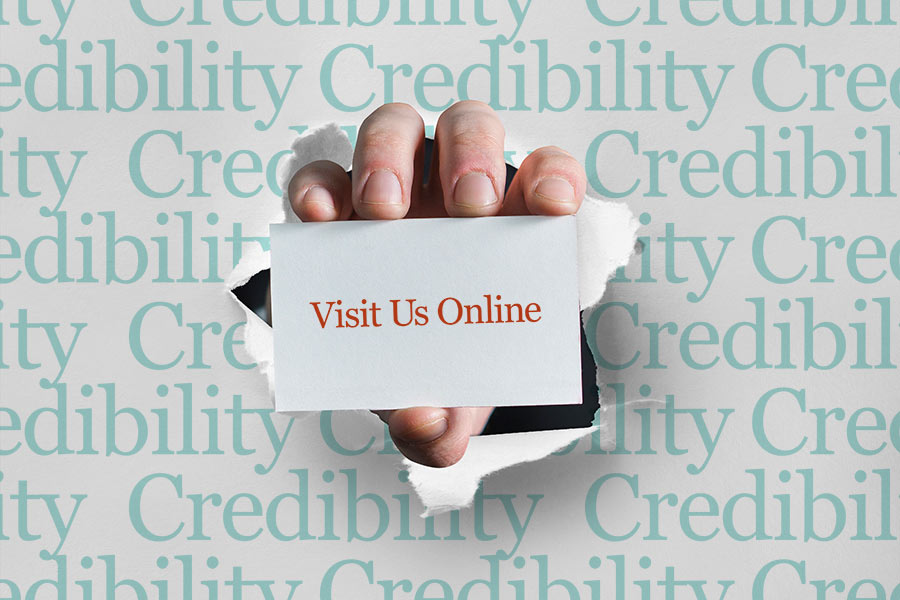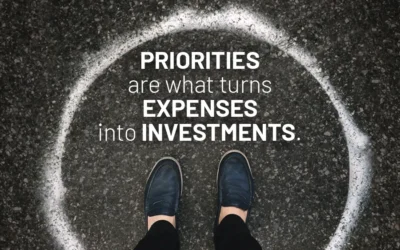When you meet new prospects, network or attend industry events, the moment you share your contact info, your credibility will be on the line. Typically, the first thing most people do when they get back to the office is check out your website. If it doesn’t immediately convey a genuine sense of empathy (quite possibly, your greatest sales tool), you can lose your audience in seconds. If it’s not well-designed and informative, those prospects will quickly turn into missed opportunities. If it doesn’t function properly, they might never get to the first click.
Your website is your most important marketing tool. It’s usually your best opportunity to showcase what makes you great and why it matters to your audience. An effective website will distinguish your business from your competitors, include customer testimonials, and provide a platform to share and promote your subject matter expertise.
But, a successful website does more than look great and make you shine. Effective sites send visitors down a pre-determined path and into a sales funnel. They offer a meaningful call to action (CTA) as an incentive to engage prospects further. Depending on the business type, free downloads, coupons, and new customer discounts can be very effective. Free consultations, while helpful, are typically not effective CTAs, since everybody offers them.
Avoid form over function
While a great design is certainly important, your message matters more. The words always come first. Most great web experiences strike the right balance between words and pictures to communicate. If your message doesn’t connect emotionally with the audience, you’ll risk losing them before they convert to prospects. If it’s too brief, they’ll become bored or, worse yet, won’t be able to make an informed decision. If it’s too wordy, they’ll lose patience and move on. If it’s all about you, guess what? Prospects don’t care about you until they know that you understand and care about them.
Clever animations, embedded videos, and other effects can positively enhance the user experience. But they should be used with discretion and never at the expense of functionality or website speed. Having glitz for the sake of having it can become more distracting than anything.
First, they need to find you
Talented web “designers” are everywhere. But, as outlined above, design is only one part of a successful web strategy. In addition to great design and effective messaging, your website also needs to work properly. It should be mobile-friendly, load quickly, be easy to navigate, and have security (which is no longer a luxury).
Driving traffic to your site is paramount. Even if you cannot afford paid advertising or a big-ticket search engine optimization (SEO) plan, there are still foundational SEO pieces you should have in place. A simple key word strategy, proper image tagging, good readability, and other best practices should be part of every website, no matter how large or small. Having a website without these simple pieces in place is like sitting in a room with the lights turned off. If people can’t see you, what’s the use of being there?
The cost of doing it yourself
Unless you do it for a living, building your own website will likely show and could undermine your marketing. Your competitors have likely hired professionals to build their sites and you should, too. If it’s something you don’t think you can afford, think again. Remember, marketing is an investment and should never be viewed solely as an expense. For early stage and start-up businesses, it’s a prerequisite to profitability and should be a key part of any serious business plan. Focus on the value a professional brings and the time it frees up for you to make money doing what you do best. The so-called savings of building your own website will be far outweighed by the cost of doing it wrong and not following best practices.
If you’ve taken a long time to build a first-rate reputation, don’t let a second-rate website undo it. Your credibility is worth preserving.
Related Posts
8 more ways you could be losing customers before you get them (part 2)
Here is our second installment of tips addressing ways you could be missing business opportunities without even realizing it.
8 ways you could be losing customers before you get them (part 1)
Instead of offering tips to get more clients, we’re putting a bit of a twist on things by highlighting ways you could be losing them without even realizing it.
Brand Identity: A demanding task, but one worth undertaking
If you’re looking to create a new brand identity or enhance your current one, expect to be deeply involved, regularly challenged and perhaps a bit frustrated. It surely won’t happen overnight. But your patience will certainly pay off.
Does it really come down to budget?
Running a successful business relies heavily on managing resources and using them wisely. But certain marketing essentials require investments and should be treated as such. In fact, many of them are prerequisites to profitability.
What’s in a name, anyway?
If your business is like ours, you don’t have a bottomless marketing budget to build awareness of a name that lacks clarity. We have to be more calculated and deliberate.
Keep the change
Evolving technology keeps all of us on our collective toes, makes us more aware of our competitors and presents more opportunities to distinguish ourselves than ever before. Moreover, it adversely impacts those who fail to embrace it.







